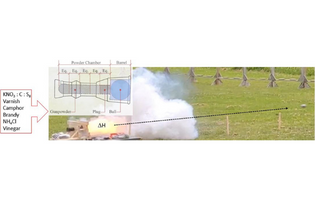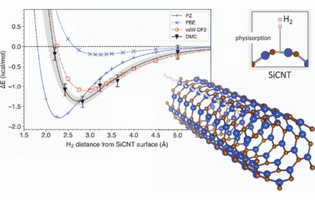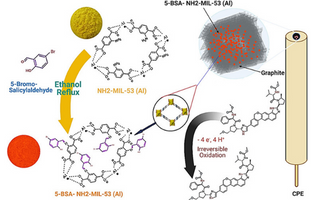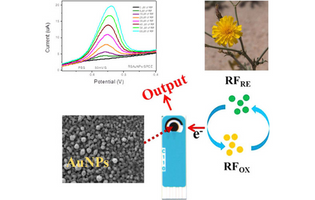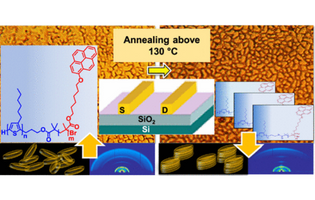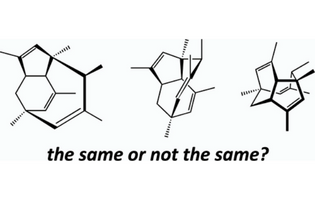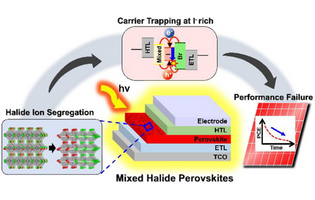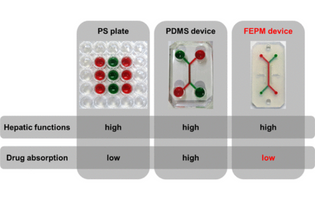What's New
ACS Omega is adding the "Viewpoint" manuscript type on October 28.
A Viewpoint provides general commentaries, tutorials, or educational insight into a research problem of interest to ACS Omega’s broad readership. They may express critical scientific analysis or personal views on exciting topics to encourage dialogue within the community. Viewpoints are not intended to be reviews of the literature and must not include new scientific data. Viewpoints must contain a Table of Contents graphic and an abstract, which should be a 2-5 sentence summary. Viewpoints’ suggested limits are 2,000 words and no more than 2 figures, with no restriction on the number of references.
As Viewpoints are invited, they will be editorially reviewed by at least two ACS Omega editors, and select articles will be sent out for peer review for final assessment at editorial discretion.
We welcome your ideas and invite your submissions to this new manuscript type - no APC payment is required for accepted Viewpoints.
ACS Omega - In The News
Gunpowder was first used in China around 900 A.D and its use had spread throughout Eurasia by the end of the 13th century, revolutionizing warfare as a propellant in firearms and artillery. Meanwhile, gunners tinkered with the formulas, trying to find the ideal concoction. Now, researchers reporting in ACS Omega have recreated medieval gunpowder recipes and analyzed the energy released during combustion, revealing that the evolution of the perfect gunpowder was a slow, trial-and-error process.
Reference: Dawn E. Riegner* et al. Evolution of Medieval Gunpowder: Thermodynamic and Combustion Analysis, ACS Omega (2021) DOI: 10.1021/acsomega.1c03380
Hydrogen energy has the potential to be a key measure to meet the United Nations net zero emissions target, but its industrial use has been hindered by the difficulty or storage and handling. Hydrogen becomes gaseous at very low temperature, which makes its storage at room temperature challenging. The interaction between hydrogen and the storage material is simple too weak to persist at room temperature, making the design of storage materials crucial to achieving the goal of utilizing hydrogen energy in daily life. In a study recently published in ACS Omega, scientists develop a computationally expensive, but highly accurate method for predicting hydrogen storage.
Reference: Genki I. Prayogo*, Kenta Hongo* et al. Importance of Van der Waals Interactions in Hydrogen Adsorption on a Silicon-Carbide Nanotube Revisited with vdW-DFT and Quantum Monte Carlo, ACS Omega (2021) DOI: 10.1021/acsomega.1c03318
Key Journal Metrics
- ACS Omega published 255 articles in the month of September 2021, for a total of 2,452 YTD.
- Articles published by ACS Omega were downloaded 593,855 times in September, and brings the total YTD usage for ACS Omega articles to 5,030,818, which represents a 76% increase in usage compared to the equivalent time period in 2020.
Published Issues
pp. 24297-25108
pp. 23643-24296
pp. 23008-23642
pp. 22468-23007
Featured Articles
Nageh K. Allam*, et al. The American University in Cairo and Suez University, Egypt
ACS Omega 2021, ASAP
In this work, the authors report the electrochemical determination of Velpatasvir as the main constituent of Epclusa, a SARS-COV-2 and and anti-Hepatitis C agent utilizing a novel metal-organic framework.
Giovanni Neri* et al. University of Messina, Italy and University of Sfax, Tunisia
ACS Omega 2021, 6, 37, 23666-23675
This work presents a gold nanoparticle-modified screen-printed carbon electrode (AuNP-SPCE) for the monitoring of important biological molecules such as dopamine and riboflavin. The results demonstrate the promising electrochemical characteristics of the synthesized AuNPs and the effectiveness of the sensor for these molecules with low limits of detection.
Mihaela C. Stefan* et al. University of Texas at Dallas, United States
ACS Omega 2021 (ASAP)
In ACS Omega's latest ACS Editors' Choice article, the authors present the synthesis and characterization of a block copolymer with discotic liquid crystalline behavior using Grignard metathesis polymerization (GRIM) and initiators for continuous activator regeneration atom transfer radical polymerization (ICAR-ATRP). The results demonstrate a path to control block copolymer morphologies with potential applications in displays, sensors and memory devices.
Dean J. Tantillo* University of California Davis, United States
ACS Omega 2021 6, 36, 23008-23014
Chosen as an ACS Omega Editors' Choice article, this personal perspective covers the practice of drawing polycyclic molecules and the implications for understanding and undertaking chemistry.
Seon Joo Lee*, Junsang Cho* et al. Korea Research Institute of Chemical Technology and Duksung Women’s University, South Korea
ACS Omega 2021 6, 38, 24304-24315
In this Mini-Review, the intrinsic instability of mixed halide perovskites arising from the ionic nature of perovskites is discussed. Several different mechanistic models are provided to explain the fundamental origin of the photo- or electric field-driven halide ion segregation based on thermodynamics and kinetics. The authors also discuss strategies to mitigate the detrimental halide segregation through a variety of properties and provide a fundamental insight into designing perovskite-based photovoltaic and optoelectronic devices for long-term stability.
Yu-suke Torisawa*, Kazuo Takayama* et al. Kyoto University, Osaka University and AGC Inc., Japan
ACS Omega 2021, 6, 38, 24859-24865
In this study, the feasibility of a tetrafluoroethylene-propylene elastomer (FEPM) in the fabrication of a hepatocyte-on-a-chip with lower drug absorption. The FEPM-based hepatocyte chip could prove useful in drug discovery research, including in metabolism and toxicity studies.
Previous Newsletters
Click below to view a previous ACS Omega Monthly Update
© 2024 American Chemical Society, 1155 16th St NW, Washington, DC 20036, USA. View our Privacy Policy



